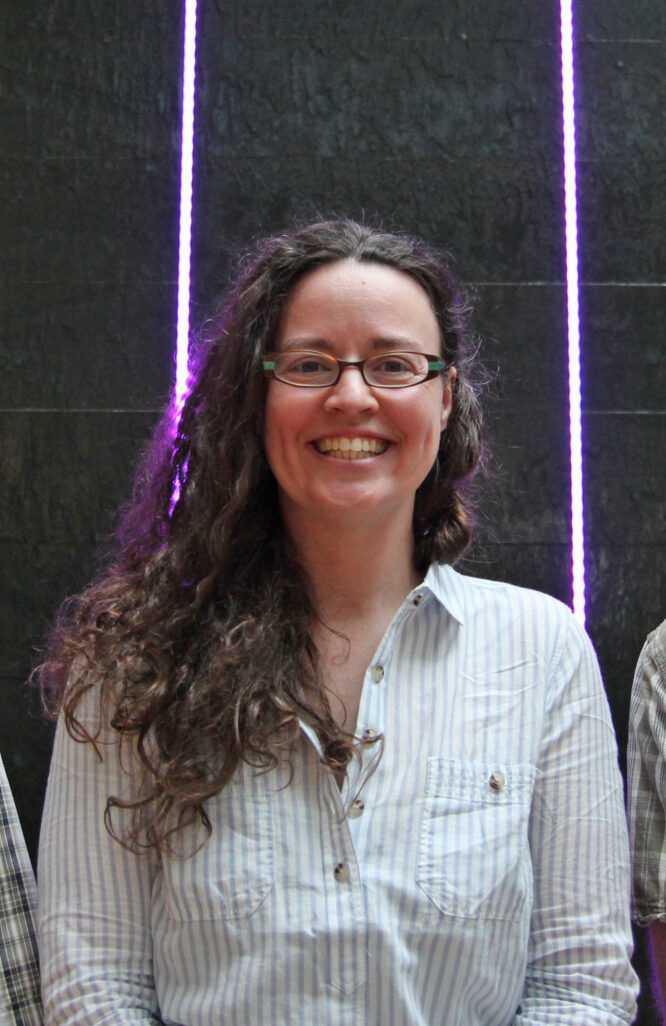Two SSEC researchers win NASA New (Early Career) Investigator Program awards
Game-changing advances in Earth system science often come not only from seasoned researchers, but also from early career scientists with novel ideas. To encourage these ideas, every three years NASA provides a select group the opportunity to see where their research might lead.
This spring, two researchers from the University of Wisconsin–Madison Space Science and Engineering Center were chosen to receive competitively awarded funds through the NASA New (Early Career) Investigator Program in Earth Science to pursue their innovative research.
Claire Pettersen and David Henderson, both of whom received their doctorates in atmospheric science in 2017 – she, from UW–Madison and he, from Colorado State University – will lead research programs over the next three years to investigate different ways of improving satellite-retrieved information about snow and clouds.

Credit: Bill Bellon
Pettersen’s research will focus on measurements of snow and snow properties from ground-based instruments like profiling radars and video imagers and use that data to validate and improve algorithms that rely on observations from satellite-based radar.
“Satellites have a hard time resolving snowfall because of limitations of the radar and surface impacts on both active and passive microwave observations,” says Pettersen. Satellite measurements are crucial; however, because they provide snowfall information for regions where there are few instruments on the ground, such as the world’s mountains, oceans or high-latitude regions.
Pettersen aims to collect information from both the surface and the satellite radar “blind zone” – the two kilometers closest to the Earth’s surface. Satellites have particular trouble identifying precipitation rates, snow types or phase changes like snow to rain or rain to snow in this region.
Providing this new level of detail about snow at the surface and in the blind zone to algorithm developers who are improving the accuracy of precipitation retrievals will benefit current and future missions, such as NASA’s Aerosol and Cloud, Convection and Precipitation that is slated to usher in the next generation of atmospheric observing capabilities.
“A big thing that we want to do in the NASA community is to connect the people doing the ground validation to the people who are developing the satellite retrieval algorithms, so a big part of this work is building a bridge between the two and facilitating data sharing,” says Pettersen.
Pettersen brings years of experience with ground-based instruments and field campaigns in the world’s snowy regions including the Great Lakes, Norway, Sweden and Greenland. She hopes this experience, combined with her global network of collaborators conducting research in complementary areas will not only help to improve satellite retrieval algorithms for her NASA NIP award, but lead to new areas of research in the future.
In addition to bringing snow and other forms of precipitation, clouds play a complex role in warming and cooling our planet. Henderson’s research aims to use satellite observations to gain a better understanding of Earth’s energy budget – the balance between solar energy that is absorbed by Earth and the energy that is reflected back to space by features such as clouds.

Credit: David Henderson
Henderson collaborated on recent research, also conducted at UW–Madison, that determined cloud heating is a key driver of the energy imbalance that exists between the northern and southern hemispheres. Specifically, cloud heating from multi-layered clouds, like cirrus over a stratus or stratocumulus cloud.
“The energy produced by the condensation of water or ice water formation of clouds in the atmosphere leads to a ton of heating in the tropics,” says Henderson. It is one of the engines driving the global circulation. The imbalance between the hemispheres; however, also stems from clouds and their radiative properties, not just from this type of latent heating.
This research is important because the imbalance between the two hemispheres helps us understand where the ITCZ (Inter-Tropical Convergence Zone) is located. The ITCZ is a low-pressure band that varies with the seasons and is typically located near the equator where winds from the northern and southern hemispheres meet.
Changes in future climate could impact the location of the ITCZ and other circulation patterns, says Henderson. He aims to add to our understanding of clouds, their role in the energy balance that can shift global circulation and how those changes might impact future climate.
Ideally, researchers would study this phenomenon using satellite instruments, but another blind area for many satellites is their inability to see layers of clouds. They can sense the upper-most layer, but not below.

To account for this deficit, Henderson’s NASA NIP will capitalize on space-based data on the vertical structure of clouds, cloud profiles and physical properties collected by NASA’s CloudSat Mission and introduce CloudSat observations of cloud heating into an atmospheric model.
“The CloudSat dataset has multi-layered clouds in it that we will apply to a simple, dry model, one that is run without moisture and clouds,” says Henderson. The satellite data provides the physical locations of clouds and their heating in the atmosphere. By changing the cloud parameters and cloud structures, shifting them higher or lower in the atmosphere, Henderson will observe the model responses to changes in cloud radiative heating. The process will tease out which clouds and cloud structures are important to pay attention to.
By applying this long-term dataset in a different way, says Henderson, he hopes to gain understanding into the role of clouds in the energy budget, its variability and influences on the global circulation.
This year, NASA received 238 proposals to the New Investigator Program in Earth Science and selected 38 for funding. Awards over the next three years total about $12.8M.
